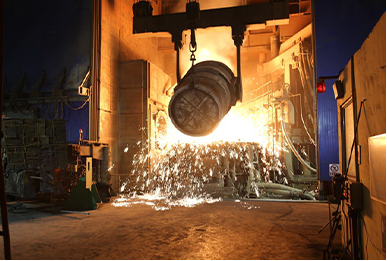Nov . 08, 2024 21:34 Back to list
low nitrogen recarburiser
Understanding Low Nitrogen Recarburisers in Steelmaking
In the steelmaking industry, the precise control of carbon content in molten steel is paramount. One of the crucial additives used to manage this is the recarburiser. Among the various types available, low nitrogen recarburisers have gained attention due to their unique composition and advantages. This article explores the significance, benefits, and considerations associated with using low nitrogen recarburisers in metallurgical processes.
What is Recarburisation?
Recarburisation is the process of adding carbon back into molten steel to achieve the desired carbon content. Steel typically undergoes oxidation during processing, leading to the loss of carbon. Recarburisers, therefore, are materials rich in carbon used to replenish this essential element. Traditional recarburisers can contain varying levels of nitrogen, which can affect the final properties of the steel being produced.
The Role of Low Nitrogen Recarburisers
Low nitrogen recarburisers are specifically designed to maintain a low nitrogen content while providing sufficient carbon. This is particularly important in high-quality steel production, where nitrogen can negatively impact properties such as ductility, toughness, and strength. Typical materials used as recarburisers include petroleum coke, graphite, and charcoal, each having different carbon and nitrogen levels.
Benefits of Low Nitrogen Recarburisers
1. Enhanced Steel Quality The most significant advantage of low nitrogen recarburisers is the improvement in the quality of the steel. High nitrogen content can lead to the formation of nitrides, which may embrittle the steel and reduce its performance under stress. By minimizing nitrogen levels, manufacturers can produce steel that exhibits better mechanical properties.
2. Improved Workability Steel with lower nitrogen content is often easier to work with. Processes such as welding and forming can become problematic with high nitrogen steel, leading to defects. Therefore, low nitrogen recarburisers facilitate enhanced workability, making the steel more adaptable for various applications.
low nitrogen recarburiser

3. Consistent Carbon Control Maintaining a consistent carbon content is essential for quality assurance in steel production. Low nitrogen recarburisers allow for better control over the carbon levels, minimizing fluctuations that could affect the steel’s characteristics.
4. Versatility in Applications Low nitrogen recarburisers can be used in a range of steelmaking processes, including electric arc furnaces (EAF) and induction furnaces. Their adaptability makes them suitable for various grades of steel, from structural to automotive steels.
Considerations When Using Low Nitrogen Recarburisers
While low nitrogen recarburisers offer numerous advantages, there are important considerations and challenges associated with their use
1. Cost Factors Low nitrogen materials can be more expensive than traditional recarburisers. Manufacturers need to evaluate the cost-benefit ratio based on their specific production requirements and steel grades.
2. Sourcing Quality Materials The effectiveness of low nitrogen recarburisers largely depends on the quality of the raw materials. Ensuring a reliable supply of high-quality low nitrogen recarburising agents is crucial for consistent steel production.
3. Compatibility with Existing Processes Before integrating low nitrogen recarburisers, steel manufacturers must consider their current processes. Adjustments may be needed to optimize the combination of materials used and their impact on the overall production efficiency.
Conclusion
The role of low nitrogen recarburisers in steelmaking cannot be overstated. They provide an essential solution for managing carbon content while minimizing the adverse effects of nitrogen in steel production. As manufacturers continue to strive for higher quality and improved performance in their steel products, the adoption of low nitrogen recarburisers will likely become more prevalent. Understanding their benefits and challenges is critical for steelmakers aiming to enhance product quality and operational efficiency in an increasingly competitive marketplace.
-
Eco-Friendly Granule Covering Agent | Dust & Caking Control
NewsAug.06,2025
-
Fe-C Composite Pellets for BOF: High-Efficiency & Cost-Saving
NewsAug.05,2025
-
Premium Tundish Covering Agents Exporters | High Purity
NewsAug.04,2025
-
Fe-C Composite Pellets for BOF | Efficient & Economical
NewsAug.03,2025
-
Top Tundish Covering Agent Exporters | Premium Quality Solutions
NewsAug.02,2025
-
First Bauxite Exporters | AI-Optimized Supply
NewsAug.01,2025
